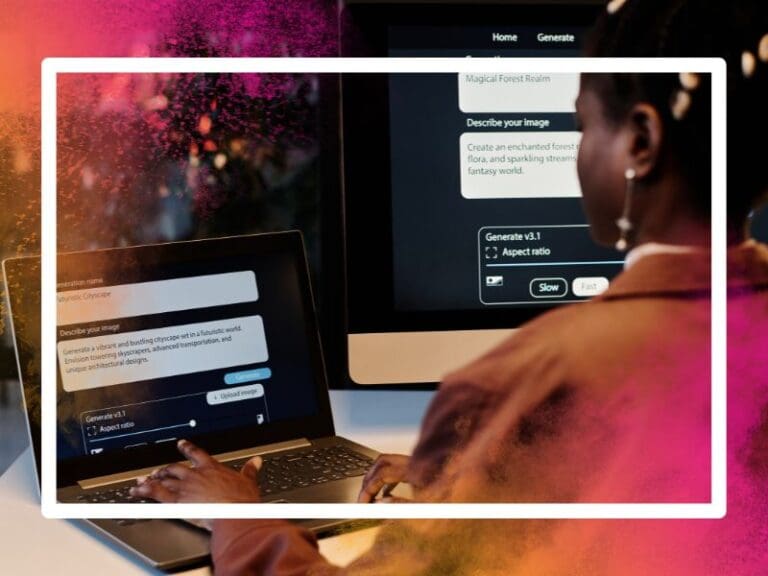I have over two decades of experience in graduate and early career recruitment and throughout my career, I’ve worked closely with thousands of business leaders to help them attract and retain top talent.
 More recently, I’ve been dedicating my time to a topic that’s close to my heart… how to attract more female employees into the technology sector.
More recently, I’ve been dedicating my time to a topic that’s close to my heart… how to attract more female employees into the technology sector.
It’s well documented through both domestic and international data that fewer women are employed in STEM fields than men, driven by factors such as bias in recruitment and ingrained stereotypes.
To create better technology and build stronger, more diverse teams, we need more women in STEM. Firstly, more girls should be encouraged to study these topics in school. Then, when it comes to the workplace, practices which encourage diversity, such as skills-based hiring, should be championed to increase inclusivity. If we can get these steps right, there will ultimately be more females in tech leadership roles.
Fortunately, as technology evolves, it’s opening doors. Innovations like AI are helping level the playing field by enabling real time learning and lowering traditional barriers to entry.
Alongside technical skill development, we must also prioritise essential life and leadership skills that are critical for women to have long-term success in the industry.
Early intervention
Gender gaps in STEM take root early in education, and if we are to revolutionise the technology gender divide, changes must begin long before women enter the workforce.
Data shows that in European countries the share of women in STEM fields of study drops “heavily” at the end of secondary school. Beyond GCSE, 35% of girls and 80% of boys study STEM topics. This trend continues at university, where only 25% of graduates in STEM subjects are women.
In addition, women are less likely than men to start an apprenticeship in a STEM field. Analysis of Department for Education data showed that in 2023–24 women accounted for 17% of engineering and technology related apprenticeship in England, compared to 52% across all subject areas.
Breaking the ‘one-size-fits-men’ mold
This status quo must change. Women bring immense value to the tech sector, often excelling in communication, creativity, critical thinking, multitasking, and project management.
Also, technology doesn’t just support our world, it actively shapes it. So, when women are excluded from building the infrastructure of our future, they are also excluded from influencing the direction of society itself.
A“one-size-fits-men” approach has been the norm for years. The average smartphone is too big for most women’s hands, and it doesn’t often fit in our pockets, and women are more likely to feel sick while wearing a VR headset. These are just two examples of the consequences of not having women, or a diverse selection of people, involved in tech product design and development. Ensuring women have a seat at the table is essential to building inclusive, successful technologies. The more people your product applies to and works for, the more effective you will be.
AI… levelling the playing field
One of the most promising opportunities to address the gender gap in STEM lies in the rise of AI. The launch of tools like ChatGPT marked a watershed moment for AI in the UK and a couple of years on, there is growing reliance on AI across both personal and professional spheres, and the UK AI market is projected to soar to £1 trillion by 2035.
The increase in ever evolving AI tools is creating a level playing field where both men and women can learn and innovate in real time. If we position AI as a neutral starting point, free from the legacy of gender stereotypes, we could pave the way for a more balanced future, potentially increasing the current 26% female participation in STEM to 50% relatively quickly.
Interestingly for female tech talent, the growth of AI has also led to the rise of ‘new-collar’ careers, which are roles that emphasise skills over traditional degrees, particularly in fields like healthcare, engineering, technology, and software. These jobs often require practical knowledge gained through alternative pathways.
For women who feel deterred by a lack of a STEM degree, this shift could be empowering, highlighting that skills are TRAINABLE. Technology is a multifaceted field where individuals from various educational and socio-economic backgrounds can thrive, from university graduates to those switching careers.
Skills based hiring
The ‘new- collar’ shift should make entry points into tech more accessible than ever, as people increasingly recognise that there are a variety of ways that technology skills can be developed outside of a traditional classroom or university setting. For example, through short course digital skills programmes or strategic workforce development initiatives.
UK businesses need to alter their mindset. Hiring teams should no longer be hung up on the traditional, static, CV, or obsessing over a specific university degree or level of experience.
What teams need to focus on is finding the right individual, with the personality, work ethic, attitude and ability to apply themselves that the company is looking for.
We need everyone to know there is an opportunity out there for them, especially if we want to attract women from different socioeconomic backgrounds who may not have traditionally been encouraged to consider a STEM career.
Continuous learning
For women in tech, their skills are constantly evolving. Whether this be learning about new technologies or developing team management abilities.
In my opinion, all employees should have access to continual, technical and career-specific training. This includes guidance around essential life skills that genuinely impact long term happiness, wellbeing, and career success. For example, mental resilience, confidence building and money management.
This holistic support should be provided by employers, as well as recruiters, who should offer guidance well beyond the initial job placement. The most effective workplaces will create a sustainable ecosystem for long term success, built on employee development, effective feedback and continuous support at all levels.
Women working in tech can also learn new skills from others in the field. Female mentorship programs are often very effective as they provide younger people with female role models. To inspire the next generation, women need visible, strong female leaders in the industry so those staring out can see what is possible.
Making STEM work for women
Empowering women in tech isn’t just the right thing to do, it’s essential for building more skilled, effective tech teams and better products. With evolving technologies and alternative pathways opening doors, we have a real chance to reshape the industry. Now, the focus must be getting more women, at all staged into STEM, and keeping them interested and thriving by offering an exciting, supportive environment.







